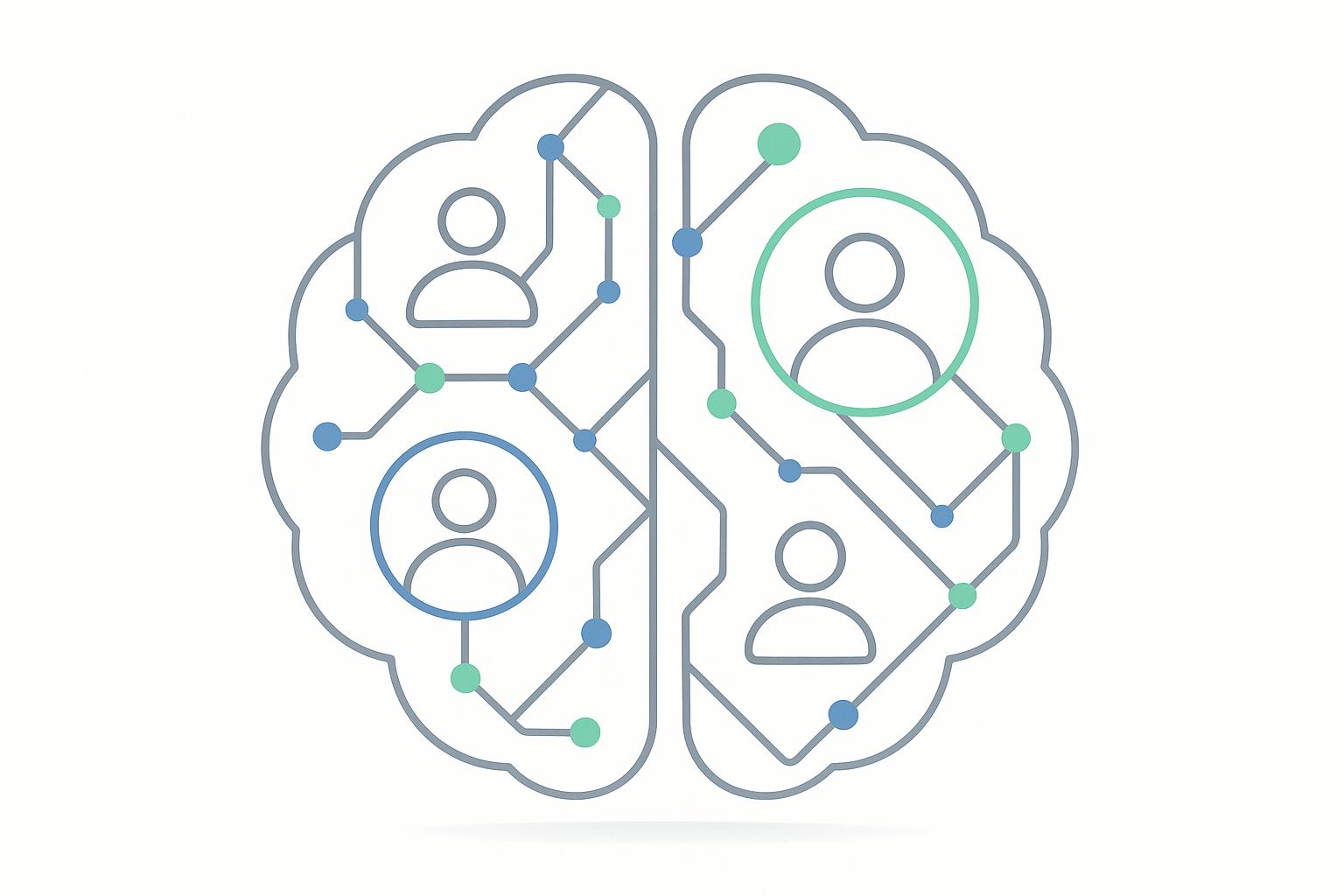Stress testing financial models is critical for managing risks in today's fast-changing financial world. AI tools make this process faster, more accurate, and adaptable to complex scenarios.
Key Benefits of AI in Financial Stress Testing:
- Real-Time Data Analysis: AI processes historical and live data for precise forecasts.
- Scenario Simulations: Evaluate thousands of potential outcomes quickly.
- Automation: Reduces human errors in complex calculations.
- Regulatory Compliance: Helps meet stress testing requirements efficiently.
Top Tools Reviewed in This Article:
- Lucid Financials: Ideal for startups with cash flow management and industry benchmarking.
- Tool 2: Tailored for large institutions, offering advanced simulations and risk analytics.
- Tool 3: Focused on detailed sensitivity analysis and regulatory compliance.
Quick Comparison Table:
| Tool Name | Best For | Key Features | Pricing | Integration Options | Learning Curve |
|---|---|---|---|---|---|
| Lucid Financials | Startups, small businesses | Real-time data, cash flow insights | $0–$600/month | QuickBooks, payroll, banks | Low |
| Tool 2 | Large institutions | Advanced risk simulations, compliance | Custom pricing | APIs, hybrid setups | Medium |
| Tool 3 | Enterprises | Sensitivity analysis, compliance | Custom pricing | Cloud, on-premises | Medium |
AI in finance is projected to grow at 30.6% CAGR, reaching $190.33 billion by 2030. Choosing the right tool ensures better risk management and stronger financial strategies.
AI Revolution in Regulatory Stress Testing
1. Lucid Financials

Lucid Financials is an AI-driven platform designed to tackle one of the biggest threats to startups: cash flow issues. With 82% of startup failures linked to cash crunches, this tool provides advanced financial planning, stress testing, and scenario analysis to help businesses stay ahead of potential challenges.
Here’s a closer look at the platform's standout features:
Core Components
Real-Time Data Processing
Lucid Financials connects seamlessly with tools like QuickBooks, payroll systems, and banks. This integration ensures businesses have access to up-to-date financial data at all times.
Scenario Planning Engine
The platform's scenario planning engine empowers businesses to:
- Create and analyze multiple financial scenarios simultaneously
- Adjust assumptions in real time to reflect changing market conditions
- Gain insights into cash flow and other critical financial metrics
Industry Benchmarking
Lucid Financials incorporates sector-specific benchmarks, helping organizations measure their performance against industry standards. This added layer of context is especially valuable during stress testing.
Service Plans
Lucid Financials offers flexible tiers to cater to businesses of all sizes:
| Plan Level | Scenario Planning Capability | Integration Features | Monthly Investment |
|---|---|---|---|
| Free | 2 scenarios | Basic modeling | $0 |
| Starter | 3 scenarios | QuickBooks + Payroll integration | $50 |
| Professional | Unlimited scenarios | Full integration suite | $150–$600 |
| Enterprise | Unlimited + Custom | Advanced custom integrations | Custom |
Each plan is tailored to meet different levels of complexity, from basic modeling for startups to advanced custom solutions for larger enterprises.
Additional Features
Lucid Financials doesn’t just help with stress testing - it also emphasizes proactive cash flow management. With real-time insights, teams can spot and address potential issues before they escalate. For businesses looking to scale, the platform includes tools to evaluate team growth and fundraising strategies, making it a valuable ally in planning for the future.
2. Tool 2
This platform is designed to meet the rigorous demands of large financial institutions, offering a powerful AI-driven solution for enterprise-level stress testing and risk management.
Core Capabilities
Advanced Simulation Engine
With the ability to process real-time data, this tool runs thousands of market scenarios in just minutes, leveraging AI to deliver fast and reliable insights.
Risk Assessment Framework
It covers a range of critical areas, including market contagion, ESG factors, financial crime analytics, and crisis management simulations.
These features deliver tangible performance improvements, as outlined below.
Performance Metrics
The platform has demonstrated measurable gains in key metrics:
| Metric | Improvement |
|---|---|
| Forecast Accuracy | 15–30% increase |
| Regulatory Compliance | Up to 12% improvement |
| Scenario Processing Speed | Thousands of simulations per minute |
| Risk Assessment Precision | 19% reduction in non-performing loans* |
*Results based on HSBC's implementation in 2024.
Integration Capabilities
Tool 2 simplifies integration challenges with features like:
- API-based connectivity for smooth data exchange
- Standardized data processing protocols
- Flexible hybrid AI implementation
- Comprehensive training and support
These capabilities ensure the platform fits seamlessly into existing systems.
Real-World Applications
In 2025, a major European bank used the platform's generative adversarial networks (GANs) to simulate a sudden liquidity crisis that traditional historical models failed to anticipate.
This practical example highlights the platform's ability to address complex, unpredictable scenarios.
Enterprise Solutions
Designed for global financial institutions, regulatory bodies, and market exchanges, the platform enhances financial crime analytics, improves market execution, and strengthens crisis management strategies.
sbb-itb-17e8ec9
3. Tool 3
Tool 3 takes financial modeling to the next level by using advanced AI to simulate and evaluate diverse scenarios, even in unpredictable market conditions. It’s designed to stress test financial models thoroughly, ensuring they're prepared for any economic shift.
Core Functionalities
At its core, this platform employs AI-driven algorithms to perform detailed stress testing across various financial aspects. Its sensitivity analysis engine pinpoints critical risk factors and evaluates how portfolios perform under different economic scenarios.
Performance Metrics
The tool’s performance metrics highlight its impact:
| Metric | Performance Impact |
|---|---|
| Forecast Error Rate | ≤20% in 50% of organizations |
| Forecasting Error Reduction | At least a 50% decline in 25% of enterprises |
| Simulation Throughput | Handles thousands of simulations efficiently |
Integration Framework
The system is built with flexibility in mind, offering deployment options such as:
- Cloud-based solutions
- On-premises setups
- Hybrid configurations
This adaptability ensures a smooth integration into existing financial systems while maintaining high security standards.
Advanced Analytics
The platform dives deep into analyzing critical financial variables, including:
- Interest rate changes
- Exchange rate shifts
- Inflation trends
- Consumer demand variations
These detailed analytics equip institutions to meet stringent regulatory requirements without compromising on precision.
"Prioritize integration capabilities with existing systems. Compatibility with CI/CD tools can enhance automated testing processes, leading to a 20% reduction in time spent on manual assessments."
- Forrester Research
Real-World Applications
Studies show the tool significantly improves forecasting accuracy, making it a reliable choice for rigorous stress testing in financial environments.
Regulatory Compliance
Fully aligned with current financial regulations, the platform aids institutions in meeting mandatory stress testing requirements. By simplifying compliance and reporting, it helps reduce regulatory risks while promoting systemic stability.
Features Comparison
This section breaks down the key functionalities of leading AI tools designed for stress testing financial models. It highlights differences in their features, integration options, and standout capabilities.
Core Features Matrix
| Feature Category | Lucid Financials | Drivetrain | Workday Adaptive Planning |
|---|---|---|---|
| Real-time Analysis | Advanced AI-driven insights | Best-in-class calculation engine | Focuses on comprehensive planning |
| Integration | QuickBooks, payroll, banking | Native connectivity with multiple sources | Limited native integrations |
| Scenario Planning | Unlimited scenarios (Professional+) | Detailed real-time variance reporting | Comprehensive modeling |
| Customization | Fully customizable models | High customization | Standard customization |
| Implementation Time | < 48 hours (1–2 days) | 2–4 weeks | 3–6 months |
This comparison sets the foundation for a closer examination of performance, usability, and integration differences among these platforms.
Performance and Usability Analysis
The performance of these tools depends heavily on the specific needs and technical setup of an organization. For instance, Workday Adaptive Planning earns praise for its strong financial close capabilities but holds a 4.3/5 rating on G2, reflecting some limitations in other areas. On the other hand, Drivetrain stands out for its seamless data integration and real-time variance reporting, making it a strong contender for businesses needing robust connectivity.
Integration Capabilities
Each platform offers distinct integration advantages. For example:
- Lucid Financials integrates directly with QuickBooks, payroll systems, and banking platforms, ensuring smooth workflows.
- Drivetrain provides extensive native connectivity with multiple data sources, enabling real-time data syncing.
- Workday Adaptive Planning offers fewer native integrations, which could pose challenges for organizations with complex tech stacks.
Beyond connectivity, advanced analytics play a critical role in setting these tools apart.
Advanced Analytics Features
When it comes to analytics, each tool brings something unique to the table:
- Lucid Financials: Excels with instant financial plans and real-time insights, particularly in higher-tier packages that offer unlimited scenario planning.
- Drivetrain: Shines with its detailed real-time variance reporting, helping users track performance fluctuations instantly.
- Workday Adaptive Planning: Focuses on comprehensive planning while maintaining strong financial close capabilities.
These advanced analytics empower businesses to uncover patterns and trends that might otherwise go unnoticed, providing deeper insights into financial performance.
User Experience and Learning Curve
Ease of use and implementation time can make or break a platform’s adoption. Here’s how these tools compare:
| Platform | Learning Curve | Implementation Time |
|---|---|---|
| Lucid Financials | Low | 1–2 days |
| Vena | High | 8–12 weeks |
| Mosaic | Medium | 2–4 weeks |
Lucid Financials stands out for its quick setup and user-friendly interface, while Vena requires a steeper learning curve and longer implementation period.
Compliance and Security
Each platform takes a unique approach to regulatory compliance, offering varying levels of built-in controls and reporting features. The most effective options ensure strong security measures while allowing users to customize compliance frameworks to meet industry-specific needs.
This detailed comparison provides the groundwork for informed decision-making and final recommendations.
Summary and Recommendations
After reviewing the feature comparisons, here are some tailored recommendations based on business needs.
For Startups and Small Businesses
Lucid Financials stands out as a strong contender for startups and small businesses due to its:
- Affordable pricing starting at $50/month
- User-friendly interface that ensures a quick learning curve
- Key integrations with tools like QuickBooks and payroll systems
Considering that industry reports show errors in 90% of spreadsheets, adopting AI-driven modeling tools like Lucid Financials can significantly reduce mistakes and improve efficiency.
For Enterprise Organizations
Larger enterprises with more intricate financial modeling requirements will benefit from platforms offering:
- Advanced scenario planning tools
- Flexible integration options
- Strong compliance features
- Customization tailored to complex workflows
Rob Drover, VP of Business Solutions at Marcum Technology, highlights the value of such tools:
"When we think about why people are implementing AI-based solutions, it's about trying to free time up with automation to be able to do more value-added, strategic-thinking tasks... Small, incremental improvements like this frees up four to five hours of someone's week and positively impacts the quality of the work they do."
Implementation Success Factors
To ensure a smooth transition and maximize benefits, focus on these critical areas:
| Factor | Focus Area | Impact |
|---|---|---|
| Data Readiness | Clean and organized data | 30% improvement in forecasting accuracy |
| Team Training | Comprehensive training | Saves 4–5 hours per week per team member |
| Integration | Real-time data connectivity | Reduces operational costs by up to 40% |
ROI Evidence
Real-world examples highlight the effectiveness of AI tools. For instance, Mastercard's 2023 implementation of GenAI led to an 85% reduction in false positives. This demonstrates the tangible impact of investing in the right technology.
Best Practices for Tool Selection
-
Start Small and Scale
Focus on high-impact use cases first, then expand gradually. -
Prioritize Integration
Ensure the platform connects seamlessly with existing tools like QuickBooks and payroll systems. -
Plan for Growth
Choose a solution with tiered pricing and features that can grow with your business.
These steps help ensure a smooth implementation process and long-term return on investment.
With projections showing that 85% of financial institutions will adopt AI by 2025, selecting the right tool now is essential to stay competitive and meet both current and future challenges.
FAQs
How do AI tools make financial stress testing more accurate and efficient than traditional methods?
AI tools are reshaping the way financial stress testing is conducted by streamlining complex data analysis and producing a wider variety of stress scenarios with unmatched speed and accuracy. These tools can rapidly process massive datasets, uncovering patterns and potential risks that might slip through the cracks during manual analysis. The result? More dependable and precise outcomes.
What’s more, AI-powered models can adjust to real-time market shifts, making stress testing more dynamic and reflective of current economic conditions. They can even generate synthetic datasets to simulate diverse market situations, enhancing the depth and reliability of stress tests while minimizing the chances of human error. With their combination of speed, flexibility, and accuracy, AI tools have become indispensable in today’s financial risk management landscape.
What features make Lucid Financials a great choice for startups and small businesses?
Lucid Financials is built to make financial management simpler for startups and small businesses. It provides instant financial plans that adjust on the fly, helping businesses stay flexible as their needs evolve. The platform also lets users compare different financial scenarios, making it easier to weigh options and choose the best path forward.
With features for monitoring key performance indicators (KPIs), managing budgets, and keeping an eye on cash flow, Lucid Financials takes the hassle out of complex financial tasks. Plus, it connects effortlessly with tools like QuickBooks, payroll systems, and banks, offering real-time insights that make managing finances smoother and more intuitive for growing companies.
What steps can businesses take to successfully integrate and get the most out of AI-powered financial tools like Lucid Financials?
To get the most out of AI-powered financial tools like Lucid Financials, businesses can take a few practical steps:
- Integrate with existing systems: Make sure the tool connects smoothly with platforms like QuickBooks, payroll software, and bank accounts. This ensures real-time data syncing, making financial processes more efficient.
- Educate your team: Offer training sessions to help employees understand features like scenario modeling and predictive analytics. This empowers them to make smarter, data-driven financial decisions.
- Keep an eye on performance: Regularly review how well the tool is meeting your business needs. Adjust its use as your financial goals or market conditions change.
By following these steps, businesses can tap into the power of AI-driven financial tools to make faster, smarter decisions.


